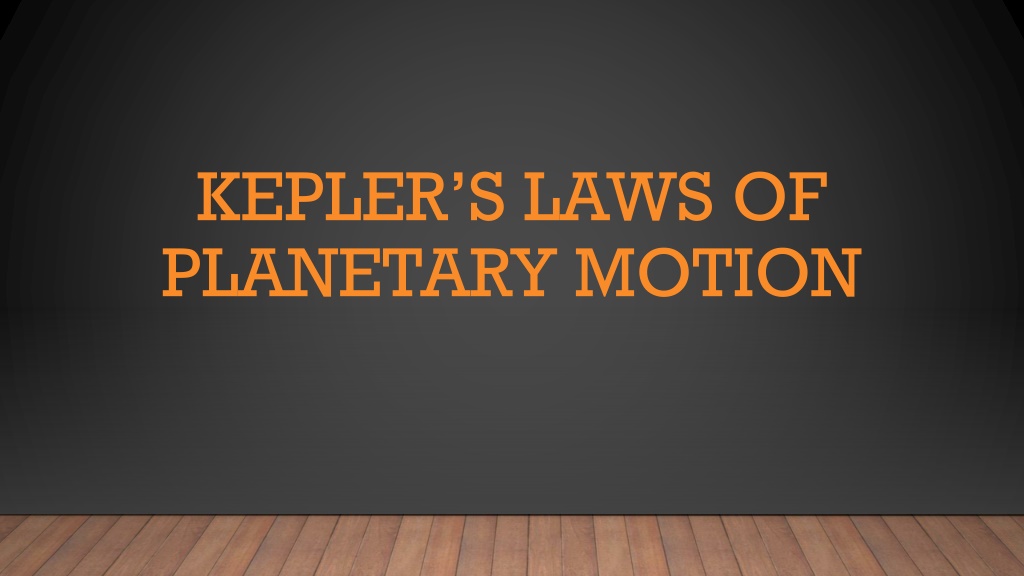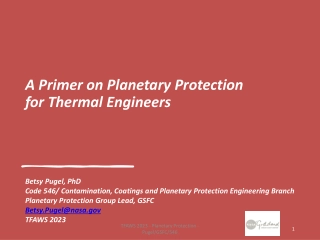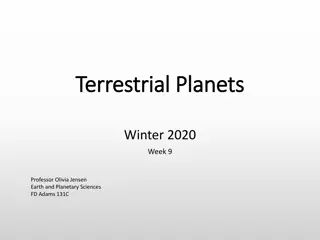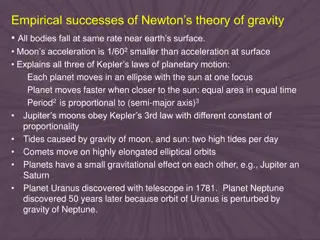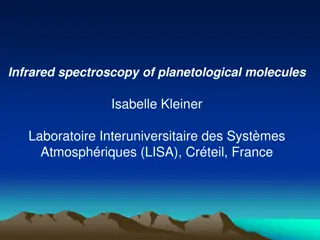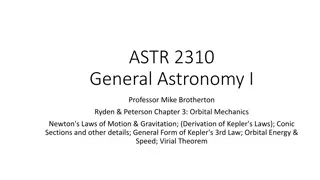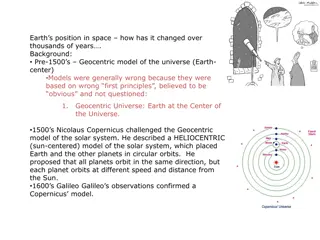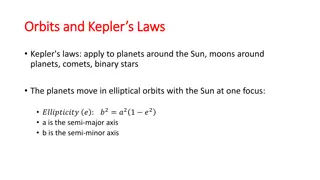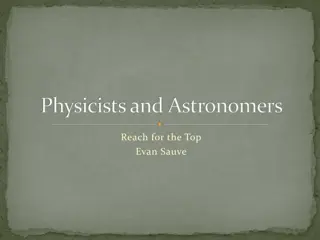Understanding Kepler's Laws of Planetary Motion
Explore the fundamental laws discovered by Johannes Kepler in his study of planetary motion. Learn how these laws revolutionized our understanding of the solar system, from the elliptical orbits to the equal area law. Discover the key concepts of focus, eccentricity, aphelion, and perihelion, shedding light on the fascinating dynamics of celestial bodies.
Download Presentation

Please find below an Image/Link to download the presentation.
The content on the website is provided AS IS for your information and personal use only. It may not be sold, licensed, or shared on other websites without obtaining consent from the author. Download presentation by click this link. If you encounter any issues during the download, it is possible that the publisher has removed the file from their server.
E N D
Presentation Transcript
KEPLERS LAWS OF PLANETARY MOTION
NICOLAUS COPERNICUS German astronomer First to place the Sun as the center of the solar system Heliocentric Model His model was also circular
TYCHO BRAHE Danish astronomer Made many measurements of the position of the planets BUT he never shared his data! Employed Kepler (but did not let him see the data)
JOHANNES KEPLER German astronomer Born in 1571 Studied planetary motion Studied Tycho s data when he died, Kepler got access to it
KEPLERS FIRST LAW The orbit of each planet is in an ellipse and the Sun is at one focus This corrected the current model of the time created by Copernicus
ELLIPSE Elongated and flattened circle Characterized by eccentricity and length of major axis Eccentricity- degree of flatness Major axis- longer axis
FOCUS (PLURAL: FOCI) One of two special points on the major axis of an ellipse A + B is always the same on any point on the ellipse
ECCENTRICITY (e) Degree of flatness e = 0 for a circle Earth, e = 0.017 e = c/a c is center to focus a is half of major axis (semi-major axis)
Aphelion The point on the orbit farthest from the Sun Equal to a distance of a(1+e) from the Sun Perihelion The point closest to the Sun Equal to a distance of a(1-e) from the Sun
KEPLERS SECOND LAW The line joining the planet to the Sun sweeps out equal areas in equal intervals of time
IN OTHER WORDS The area from one time to another time is equal to another area with the same time interval
ACCELERATION OF PLANETS Planets move faster when closer to the Sun Force acting on the planet increases as distance decreases and planet accelerates in its orbit Planets move slower when farther from the Sun
KEPLERS THIRD LAW The square of the period of any planet is proportional to the cube of the semi-major of its axis Also referred to as the Harmonic Law
T2 = r3 T (P is used for this as well) is the orbital period expressed in years r (a is used for this as well) is the semi-major axis expressed in astronomical units (AU) 1 AU is the average distance between Earth and the Sun About 1.5 x 108 km or 9.3 x 107 miles
COMETS Although Kepler s Laws were intended to describe motion of planets around the sun, they also apply to comets
KEPLERS THREE LAWS SUMMARIZED Orbit of each planet is in an ellipse and the Sun is at one focus Equal areas in equal intervals of time T2 = r3
SIR ISAAC NEWTON Provided explanation for WHY ?3 all planets ?2 was the same for Kepler could never figure out why this is constant
NEWTONS VERSION OF KEPLERS 3RD LAW G= Gravitational constant= 6.673 10 11??2 ??2
